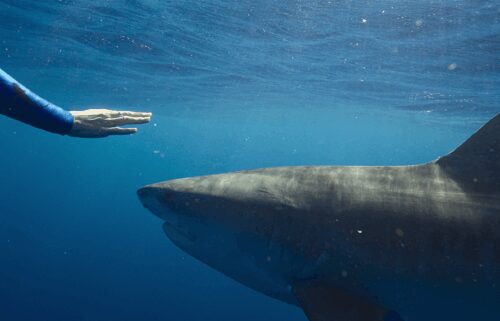This 13-year-old scientist may have designed a better version of Hyperloop

Several rival companies may be hard at work trying to get Elon Musk’s Hyperloop concept off the ground, but hurtling across country — maybe even across continents — at 600 miles per hour in a low-pressure steel tube still feels far from reality.
But 13-year-old New York student Caroline Crouchley may have invented a more economically viable and eco-friendly Hyperloop solution.
Crouchley’s idea, which just won second place in the annual 3M Young Scientist Challenge, is to build pneumatic tubes next to existing train tracks.
Magnetic shuttles would travel through these vacuum tubes, connected via magnetic arm to trains traveling on the existing tracks.
This system would utilize current train tracks, thereby cutting infrastructure costs and, Crouchley says, eradicating the potential safety risk posed by propelling passengers in a vacuum.
There’d be no need for trains to use diesel or electric motors, making the trains lighter and more fuel-efficient.
This is important to Crouchley, who aims to devise active solutions to the climate crisis.
“I pinpointed transportation as something I wanted to work on because if we can make trains more efficient, then we can eliminate the amount of cars, trucks and buses on the road,” Crouchley tells CNN Travel.
Real world inspiration
Crouchley, from Garden City in New York state, focused on train travel as a solution because her father and brother regularly travel by rail into New York City.
Her science teacher encouraged her to enter the Young Scientist Challenge, which invites middle schoolers in the US to submit a video outlining an ingenious solution to an everyday problem.
“After I got my inspiration, I did a lot of research on my design and on Hyperloop and Maglev. And I put my design on paper and later put it into Autodesk Inventor [a computer program for 3D design],” says Crouchley.
Maglev, Crouchley noted, is a very efficient, but expensive, train design.
Meanwhile, she concluded that more traditional forms of Hyperloops have their flaws.
“Hyperloop is very high risk,” says Crouchley.
“My design can be less expensive and more efficient than current train technology that’s out there already. It’s also safer than Hyperloop.
My design can rely on 100% renewable energy, so it eliminates the need for a diesel engine or an electric motor, which makes the train lighter, so it can move faster.”
Future steps
Crouchley’s design was awarded second place in the Young Scientist Challenge, with 14-year-old Californian Kara Fan, who invented a first aid liquid bandage designed to reduce the risk of superbug infections, nabbing the top spot.
Crouchley says participating in the competition was a lot of fun. Along the way, she worked with a mentor, presented her invention to a panel of scientists and worked together with other innovative young scientists.
The next step to making her Hyperloop dream a reality? Building a bigger model to work out how the concept will work on a larger scale.




